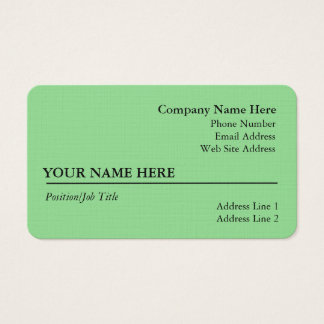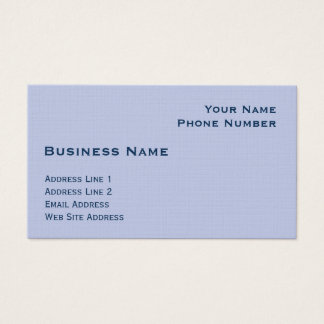- Marketing Strategy: How will your marketing plan support your business goals?
- Mission Statement: What are you trying to accomplish, and why?
- Target Market: Who are you trying to reach with your marketing activities?
- Competitive Analysis: Who are you up against, and where do you rank?
- Unique Selling Proposition: What makes your business unique?
- Pricing Strategy: What will you charge, and why?
- Promotional Plan: How will you reach your target market?
- Marketing Budget: How much money will you spend, and on what?
- Action List: What tasks do you need to complete to reach your marketing goals?
- Metrics: How are you implementing, and where can you improve?
Here's how you can answer each of these ten critical questions.
01 Marketing Strategy: How will your marketing plan support your business goals?
Before you start developing your marketing plan, you need to have a very clear idea of what you want to accomplish. This is your marketing strategy, and it is directly related to your business goals and objectives. Your marketing strategy outlines what you want to do, and the rest of this marketing plan will provide details on how you will do it.
For example, let's say one of your business goals is to expand your brick-and-mortar retail store into an e-commerce website. Your marketing strategy for that goal could be to introduce your products to a new national market segment. You would then break down your strategy even further into short- and long-term objectives, while defining what your specific marketing message will be. Read more about how a marketing strategy and a marketing plan work together.
If you don't have specific business goals yet, walk through this business goal setting guide to get started. Also, make sure you are attaching a specific timeline to your goals (i.e., a 90-day plan). That will help you create a more targeted and realistic marketing plan.
02 Mission Statement: What are you trying to accomplish, and why?
Your mission statement answers the questions: What are you trying to do? Why you are doing it? You may have already created a mission statement as part of your business planning process. If so, you will want to add it to your marketing plan.
In your marketing plan, your mission statement is the foundation. Although it may not play a direct role in your marketing activities, your mission statement focuses on your business goals and helps you make sure that the marketing activities you conduct support the business's overall objectives. It's an effective tool to refer back to whenever you start to question if you are still on the right track.
03 Target Market: Who are you trying to reach with your marketing activities?
Your target market is the specific audience you want to reach with your products and services; the group you will be attempting to sell to. The more details you include as you answer this question, the more targeted your marketing plan will be.
- Take time to conduct market research so you can identify:
- Who makes up your target audience
- Where you can find them
- What they value as important
- What they are worried about
- What they need right now
It's helpful to create a sketch of the person or business that you would consider your "ideal customer." Not only can this help you identify specifics about them, but it can also help you personalize your marketing messaging.
04 Competitive Analysis: Who are you up against, and where do you rank?
One of the best ways to research your target market and prepare your own marketing activities is by looking at your competition. You should know who is out there selling something similar to what you are selling, especially if they are selling it to consumers that fit your ideal customer profile. Take a hard look at what they are doing right, and what they may be doing wrong.
One way to conduct a competitive analysis is with a SWOT analysis, which is a strategic tool that evaluates a company's strengths, weaknesses, opportunities and threats. Take time to measure the SWOT of your top competition as well as your own business to get a clear picture of your competition and how you measure up.
Conducting a thorough analysis of your competition will help you identify areas where you can beat the competition, fine-tune your niche market, and make sure you are prepared to address the challenge posed by your competition.
05 Unique Selling Proposition: What makes your business unique?
Once you know what you're up against in the market, you need to identify the approach that will set you apart from everyone else. What makes your business, products and services unique and desirable to your target market?
A unique selling proposition (USP) is a statement that outlines how your business, products or services are different from your competition. It identifies what makes your business the better choice, and why your target clients should choose you over the competition.
Use this unique selling proposition tutorial to craft a USP for your business.
06 Pricing Strategy: What will you charge, and why?
If you have a traditional business plan, then you have already spent a great deal of time researching the best price point for your products and services. Now, it's time to relate that pricing information to your marketing activities.
One of the most important factors to evaluate is how you will work your pricing strategy into your marketing message. In most cases, you want to be able to support the price points you have chosen by providing your customers with a clear idea of the value and benefits they will get in return. A high value proposition is often the factor that leads a customer to the decision to purchase.
If you haven't identified your pricing perspective yet, review this pricing strategy primer to explore the different approaches and consider how they may relate to your business.
07 Promotional Plan: How will you reach your target market?
As a key element of the marketing mix, your promotional plan covers all of the communication that will take place with the consumer. Essentially, your promotional plan answers the question: How will you get the word out about your unique selling proposition to your target market?
Your promotional plan should combine a variety of marketing activities and may include:
- Advertising
- Packaging
- Public relations
- Direct sales
- Internet marketing
- Sales promotions
- Marketing materials
- Other publicity efforts
While you don't want to throw too many variations into your promotional plan in the beginning, you should start by selecting 3-5 specific activities that will help you execute the marketing strategy that you outlined in the first step.
For example, if one of your goals is to provide five free initial consultations within three months, then your promotional plan may include focusing on targeted leads through a cold calling campaign, a social media outreach plan and a direct mail campaign.
This step should be completed at the same time as the next step since your budget will impact what activities you can include on your plan.
08 Marketing Budget: How much money will you spend, and on what?
As you outline a promotional plan, you will need to have a budget in place so you can determine which activities you can afford while staying within your budget. Unfortunately, most new small businesses have a limited budget when it comes to marketing, so creating a promotional plan that works with the funds you have available is vital.
You may have an annual marketing budget, but it will also be necessary to break it down into separate monthly budgets so you can track results and modify the promotional plan to focus on the activities that provide you with the biggest return on investment.
To get you started, here is a marketing budget template from Entrepreneur.com, and another template from Microsoft Office.
09 Action List: What tasks do you need to complete to reach your marketing goals?
Outlining exactly what you need to do and when you need to do it is an important part of your marketing plan. This will become your task list that guides you through every one of your promotional activities. Your action steps will help you stay on track so you can make consistent progress, without having to regroup and recreate the wheel every time you're ready to take a step.
To create your marketing plan action list, you will follow the same process you use when you manage your regular daily tasks: You will take the end goal, and break it down into a series of single-step tasks that will lead you to achieving your goal.
For example, if one of the activities outlined in your promotional plan is to launch a direct mail campaign, your first few action steps may look like this:
- Determine your budget for the campaign
- Clarify your objective of the campaign
- Determine the type of direct mail you will send
- Hire a designer or firm to create your collateral
- Write (or hire out) the copy for the direct mail piece
- Clarify the call to action
- Have a draft of the direct mail piece created
Your action list can take a number of different forms, as long as it is created in a way that supports progress. Each action item should also include a due date that works with the timeline you created for your marketing plan. And typically, the smaller the steps, the easier it will be for you to complete tasks and build momentum.
10 Metrics: What results have you achieved, and where can you improve?
All of this work you've put into creating a marketing plan for your small business will go out the window if you can't track and measure the results of your activities. This step will allow you to take your marketing plan from a one-time, static document and turn it into a breathing blueprint that will grow and develop with your business.
The way you track and measure your results will depend on the type of marketing tactics you engage in. For example, online marketing can be tracked using analytics and other Internet-based metrics, while tracking offline marketing methods will require a more manual approach.
In general, the more standardized your system for tracking, the more relevant your results will be ... and the more successful you will become at tailoring your marketing activities to focus on the areas where you will have the most success.
15% Off All Business Cards
VIEW ALL CARDS
$60.05
$60.05
$60.05
$62.55
$60.05
$60.05
$60.05
$60.05
$52.55
$52.55
$60.05
$60.05












No comments:
Post a Comment